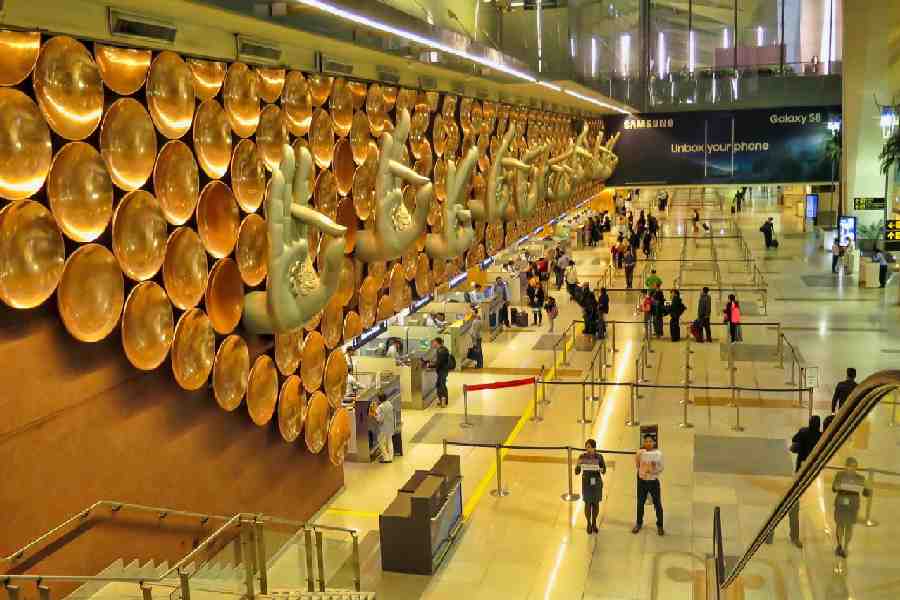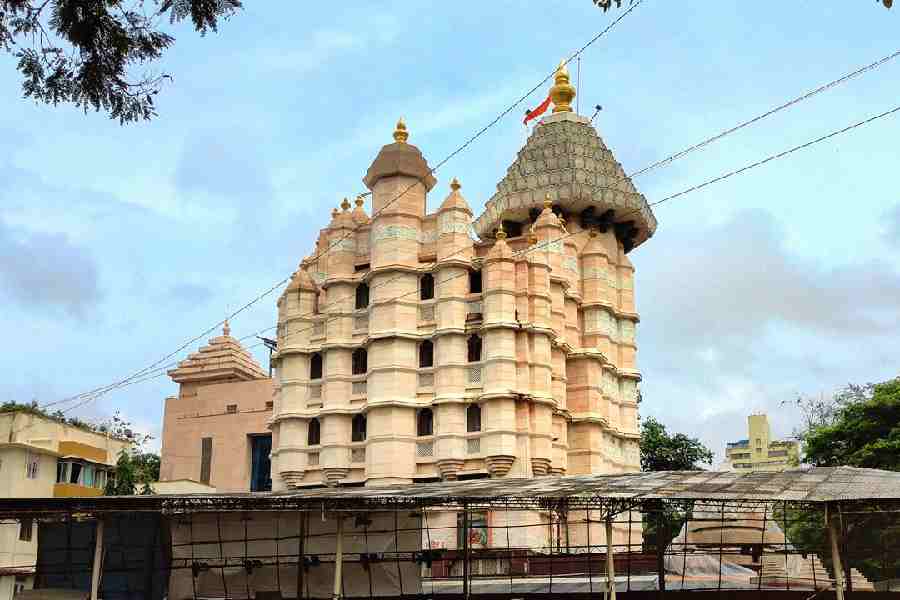A mid-April morning, 7.30 to be precise. According to the weather app on my phone, the temperature is 42°Celsius, but that does not seem to deter the bonhomie among the bathers at darya kal on central Calcutta’s Prinsep Street. Darya kal is the local term for hydrants spouting unfiltered river water at street corners all through the day all over the city. A darya kal constitutes a tank, all tiled over, into which water enters from underground taps directly connected to River Hooghly.
Most of these public bathers are street dwellers. They are coolies, odd-job men, assistants at makeshift pavement shops, rickshaw and cart pullers… There is Mahinder Singh, 60, from Bihar’s Sitamarhi who runs a small tea shop. He is obsessive about cleanliness. He tells me that he bathes five times a day in summer. Then there is Mohammed Asabul, 59, who arrives brushing his teeth. He is amused that a patrakar should want to talk to a “nahakkar” like him. He points to a group of men in their early twenties and says: “They don’t even know how we had to fight for our bathing rights.”
The oldest bather here, Mohammed Akhtar, 65, starts to tell me the story while he uses a discarded canister to pour water on himself. I count ashe pours 50 fair-sized canisters of darya paani to wash off all that froth and foam. He requests me to wait until he’s dried himself, when overhearing him, Mohammad Azam jokes, “Chacha is forever ready to spin this old yarn.”
Azam, who finished bathing long before Akhtar, is dressed in a brown safari suit. The 48-year-old deals in scrap iron, motor parts, tyres. That day he is in a hurry to go to Khanna Haat — a pavement market of cheap clothes — and buy new clothes for his family back home in Jaley, a village in Darbhanga; after all, Id is around the corner. Azam’s jibe infuriates the elderly Ajit Yadav covered in soap. “For these chhichhoras (upstarts) these anecdotes don’t mean anything. Had we not stood up for our rights, they’d have to stand in queues outside Sulabh Sauchalayas spending Rs 10 for every shower.”
By this time Akhtar emerges all wrapped in his green gamchha. He sits me down at a bench near the darya kal and starts to narrate the harrowing stories of the late 1990s right through to the first few years of the new millennium. They are something like this.
Those days halla garis or vans from Bowbazar and Hare Street police stations would swoop down on unsuspecting bathers every morning. One day they picked up Akhtar. “I was yet to wash the soap off my body. It was so embarrassing. I had to pay a bribe of Rs 25, which used to be half a day’s earnings — to get bail. They booked me for squatting,” he says in between a string of swears against the Left Front government and “its anti-poor ways”.
Jamir Ahmed, who is a tea retailer near the dariya kal, also remembers the halla gari menace. The official name for it was Operation Sunshine and it was a grand eviction drive by the Calcutta Municipal Corporation (CMC) to rid the streets of hawkers and other “eyesores”. Says Ahmed, “I saw people getting arrested for taking a bath in the Ganga kals. Even some of my relatives were nabbed and my father paid for their bail.” The eviction drive continued for about a decade. Ganga kal is another name for darya kal.
I could go on talking to them, but these men have to get on with their day and day’s work. So I say my goodbyes, promise to meet up later in the evening. I start to walk down Bentinck Street and then take a right turn towards Ganesh Chandra Avenue. I want to see other dariya kals in Chandni Chowk, Wellington Square, Bowbazar...
Most of the darya kals have blue-and-white-tiled tanks. The prettiest of the lot is the one opposite Hind cinema in Ward 51. It gets me thinking of the Great Bath of Mohenjodaro. As I keep walking, I think of the Turkish hamams, the Russian banyas…
Most of the darya kals in Ward 46 have plaques with the name of a councillor on them — Gopal Chandra Saha. I look up his number and give him a call. Saha says, “I am no longer the councillor, but yes, I did repair many of the Ganga kals. This water is a lifeline for ordinary people, especially daily wagers.”
Saha is not able to tell me much about the when, how and why of these water hydrants. It is Haripada Bhowmick, an expert on Calcutta and founder-editor of the magazine Kolkata Purashree published by CMC, who is full of details about the first pumping station at Chandpal Ghat in 1833 that supplied water from the Hooghly to the nahars or taps.
Steam engines were used to pump the water, which then flowed into a pipeline that ran from Chandpal Ghat along the Governor’s residence to Esplanade, before moving northwards towards Jorasanko and lower Chitpore. The pipeline had several outlets in the form of nahars for public access. Another pumping station came up at Mullickghat; it pumped the river water further north, towards Shyambazar.
My guess is that the water hydrants all around are present-day incarnations of those nahars. In the old days, some of the hydrants were designed to look like lion heads; if you look carefully, you might spot one yourself. According to Bhowmick, the hydrants had been primarily installed to wash the streets of Calcutta, water the horses that drew the carriages of sahibs and babus alike, and supply waterfor firefighting.
It is evening when I share my gleanings with Singh, Asabul, Azam and Akhtar. But they seem unimpressed. Azam says, “What do we care about such ancient tales? What is important is that the darya kals remain functional. We get through summer because of them.”
Mahinder nods. He has bathed for the fifth time that day and is offering prayers — also for the fifth time — to the Lakshmi idol next to his cash box.
I wonder what he prays for. Perhaps something like this? “Letthe darya kal waters roll down like your blessings, and our bathing brothers’ bonhomie like an ever-flowing stream.”
You never know. The streets of this city are full of surprises.












